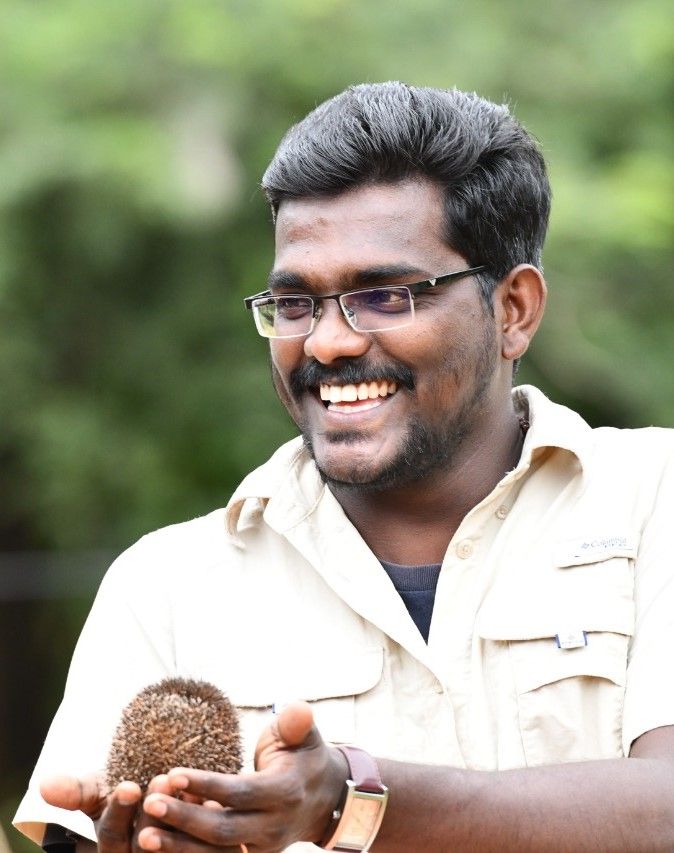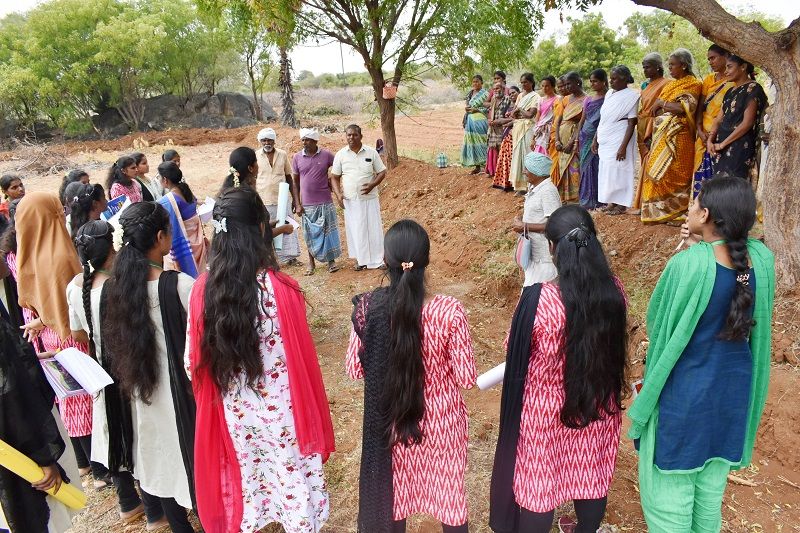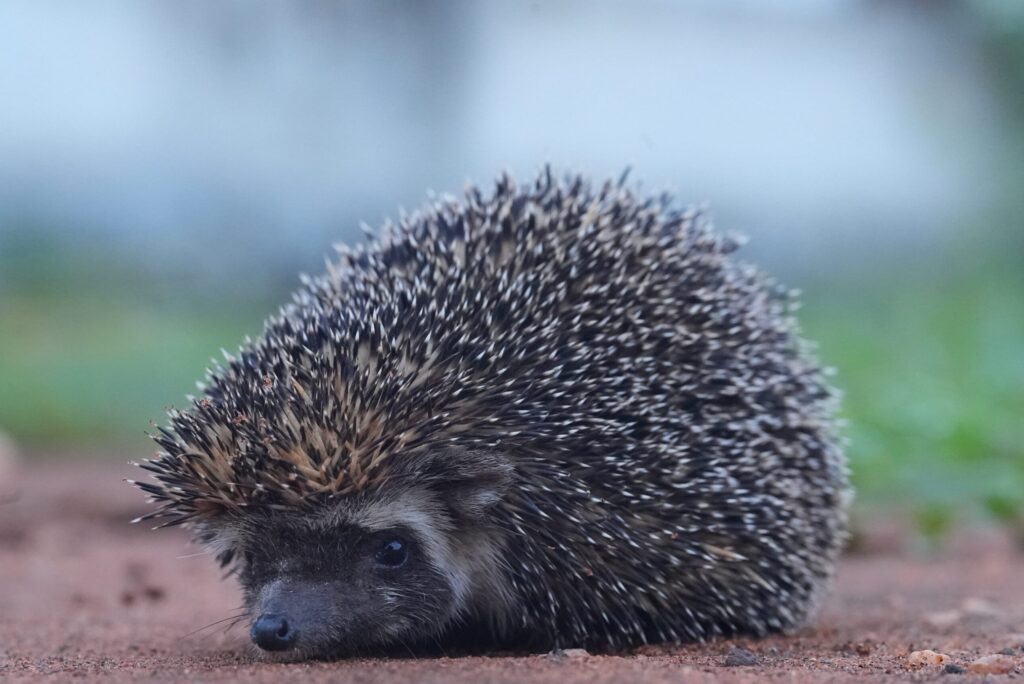Meet Brawin: Madras Hedgehog Conservation Project leader
In this series, we chat to the dedicated staff members, conservation partners and volunteers at PTES. We find out why each of them chose a career in wildlife conservation, what they find rewarding about their work or what they love most about what they do and why they get involved.
Dr Brawin Kumar
Madras Hedgehog Conservation Project
Why did you decide to dedicate your life to protecting Madras hedgehogs?
Well, it’s a journey that began in the heart of Tamil Nadu, India, where I grew up surrounded by the rich biodiversity of the Western Ghats.
From a young age, I was drawn to the wonders of nature, exploring forests and volunteering for environmental causes. My passion for wildlife conservation started in 2006 during a refresher course on Teachers for Tigers.
It was then I realized the urgent need to protect not just the charismatic megafauna, but also the smaller, often overlooked creatures that play equally crucial roles in their ecosystems. As a researcher specialising in small mammals, particularly hedgehogs and rodents, I’m dedicated to studying lesser-known creatures in lesser-studied landscapes. There’s little research on them, a general lack of awareness, which is all the more worrying considering the diversity of the rodent family. Researching these endemic species, and highlighting their needs are two of my primary goals. By collaborating and engaging with the local community, especially young people, we can protect and conserve the few remaining intact habitats and their small mammal inhabitants.
What’s your role and what is the most rewarding part of it?
As a conservationist, one of the most rewarding aspects of my work is connecting and inspiring conservation groups and individuals. Witnessing the positive impact these collaborations have on both the environment and the communities that depend on it is deeply fulfilling. Engaging in conservation efforts reaffirms my belief in the power of collective action to make a difference. Every successful project, whether it’s establishing protected areas or implementing sustainable management practices, contributes to the preservation of biodiversity and the conservation of endangered species like Madras hedgehogs.
What are the main reasons for some of your greatest successes?
I have always kept in mind the fact that my research findings, my journey or the essence of my research results should be communicated with the community in their language. The community may be the people living alongside hedgehog, the local officers from the forest department or even a school nearby; I might be sharing the information in scientific journals or local papers. But each conservation needs to be in their language. This approach, which I’ve used since 2010, is deeply influenced by the invaluable lessons I learned from conservationist Sally Walker. She emphasised the core values of conservation, stressing the importance of community inclusion and appreciation. It’s not just about conducting research; it’s about actively involving and empowering the communities that live alongside these precious species and habitats. Success depends on effective communication, community engagement, strategic planning, and of course the commitment to conservation.
What has been one of your most memorable experiences?
My work searching for Elvira rats (Cremnomys elvira) a few years ago was so rewarding. They’re Critically Endangered and also considered an EDGE species (evolutionary distinct and globally endangered). The rats are endemic (only found) to a single location in Salem District, Tamil Nadu, India. Thought to be extinct in the wild, they’d not been seen since 1929. We set out to discover whether Elvira rats still existed in the area. Our dedicated team successfully trapped 19 Elvira rats over nine months, a wonderful achievement. We found they still live in an area comprised of rocky cliffs and large boulders, covering just a few square kilometers. Our rediscovery is new to science, and their existence has made the mountains so special. And I was honoured to receive a Segre Species Survival Award in 2022 to continue studying them.
What difficulties or challenges do you face in your work and how do you think you’ll overcome them?
Gaining trust from people who are critical to the survival of rare species such as Madras hedgehogs and Elvira rats, and getting the scientific information needed to protect such rare species have been huge hurdles to cross. Protecting a species when we have such limited knowledge about their habits and needs poses great challenges. And securing long-term funding for small mammal conservation projects is really difficult, which is why this support from PTES is so critical.
Do you have a special love for a particular species and why?
I have a special affection for many species but I’ll narrow it down to two. The first is Madras hedgehogs (Paraechinus nudiventris), my second is Elvira rats, for obvious reasons. I’m passionate about both animals and I’m delighted that PTES has enabled me to study Madras hedgehogs in more detail whilst also working with the local community to ensure their survival.
What does the future hold for you and your species?
The future is intertwined with challenges and opportunities for me and the species I work to protect. On one hand, escalating threats to biodiversity, including habitat loss, climate change, shifting weather patterns, and human-wildlife conflict, pose significant risks to the survival of many species, particularly those already vulnerable or endangered, like Madras hedgehogs. However, I remain optimistic about the potential for positive change. The growing global awareness of environmental issues, coupled with increasing efforts to address these challenges through conservation action, gives me hope for the future. The younger generations and new scientific and AI tools will play a vital role in conservation biology. As more people recognise the importance of preserving biodiversity and safeguarding our natural heritage, there is potential for greater support and investment in conservation initiatives. The future depends on our collective actions, and by implementing effective conservation strategies, we can ensure a brighter future for animals like Madras hedgehogs and the ecosystems they call home.
How can we best inspire the younger generation?
Now scientific knowledge is freely available online, we need to inspire young people to come up with innovative ideas and also to ensure that we all live more sustainable lives. We need to embed environmental education in schools and colleges to give young people a basic understanding of the importance of nature. In recent years the growing participation in citizen science projects and using digital resources for learning are amazing.
Dr Brawin Kumar leads the Madras Hedgehog Conservation Project in Tamil Nadu, which is working to protect the hedgehogs by studying their populations and educating the local community about their conservation importance.



